
Lowndes County is in the central part of the U.S. state of Alabama. As of the 2020 census, the county's population was 10,311. Its county seat is Hayneville. The county is named in honor of William Lowndes, a member of the United States Congress from South Carolina.

Monroe County is a county located in the southwestern part of the U.S. state of Alabama. As of the 2020 census, the population was 19,772. Its county seat is Monroeville. Its name is in honor of James Monroe, fifth President of the United States. It is a dry county, in which the sale of alcoholic beverages is restricted or prohibited, but Frisco City and Monroeville are wet cities.

Pickens County is a county located on the west central border of the U.S. state of Alabama. As of the 2020 census, the population was 19,123. Its county seat is Carrollton, located in the center of the county. It is a prohibition, or dry county, although the communities of Carrollton and Aliceville voted to become wet in 2011 and 2012, respectively.
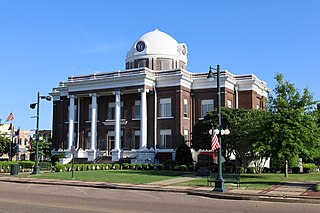
Dyer County is a county located in the westernmost part of the U.S. state of Tennessee. As of the 2020 census, the population was 36,801. The county seat is Dyersburg. Dyer County comprises the Dyersburg, TN Micropolitan Statistical Area.

Alexander County is the southernmost and southwesternmost county in the U.S. state of Illinois. As of the 2020 census, the population was 5,240. Its county seat is Cairo and its western boundary is formed by the Mississippi River.
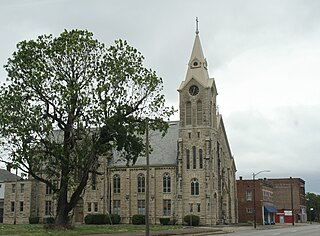
Cairo is the southernmost city in Illinois and the county seat of Alexander County. A river city, Cairo has the lowest elevation of any location in Illinois and is the only Illinois city to be surrounded by levees. It is in the river-crossed area of Southern Illinois known as "Little Egypt", for which the city is named, after Egypt's capital on the Nile. The city is coterminous with Cairo Precinct.
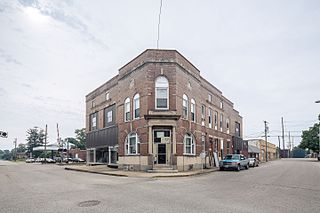
Fort Branch is the largest town and 2nd largest community in Gibson County, Indiana after Princeton. The population was 2,965 at the 2020 census. It is part of the Evansville, Indiana, Metropolitan Area.
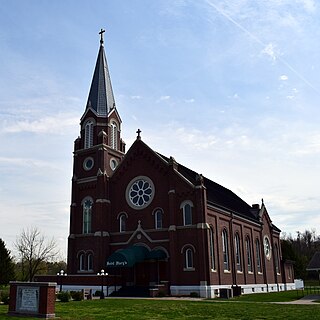
Pierce City, formerly Peirce City, is a city in southwest Lawrence and northwest Barry counties, in southwest Missouri, United States. The population was 1,292 at the 2010 census. In 2010, the town annexed property along Route 97 into Barry County to a point just north of U.S. Route 60. It was estimated to be 1,309 by the City of Pierce City as of July 1, 2019.

Samuel Langhorne Clemens, known by the pen name Mark Twain, was an American writer, humorist and essayist. He was praised as the "greatest humorist the United States has produced," with William Faulkner calling him "the father of American literature." His novels include The Adventures of Tom Sawyer (1876) and its sequel, Adventures of Huckleberry Finn (1884), with the latter often called the "Great American Novel." Twain also wrote A Connecticut Yankee in King Arthur's Court (1889) and Pudd'nhead Wilson (1894), and co-wrote The Gilded Age: A Tale of Today (1873) with Charles Dudley Warner.
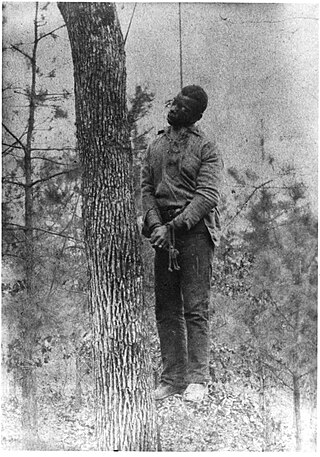
Lynching was the widespread occurrence of extrajudicial killings which began in the United States' pre–Civil War South in the 1830s and ended during the civil rights movement in the 1950s and 1960s. Although the victims of lynchings were members of various ethnicities, after roughly 4 million enslaved African Americans were emancipated, they became the primary targets of white Southerners. Lynchings in the U.S. reached their height from the 1890s to the 1920s, and they primarily victimized ethnic minorities. Most of the lynchings occurred in the American South, as the majority of African Americans lived there, but racially motivated lynchings also occurred in the Midwest and border states. In 1891, the largest single mass lynching in American history was perpetrated in New Orleans against Italian immigrants.
Roy Belton was a 19-year-old white man arrested in Tulsa, Oklahoma with a female accomplice for the August 21, 1920 hijacking and shooting of a white man, local taxi driver Homer Nida. He was taken from the county jail by a group of armed men, after a confrontation with the sheriff, and taken to an isolated area where he was lynched.
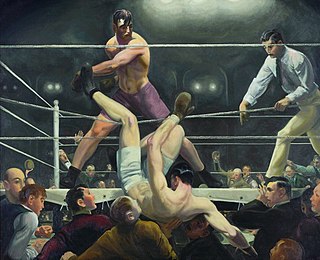
American Realism was a style in art, music and literature that depicted contemporary social realities and the lives and everyday activities of ordinary people. The movement began in literature in the mid-19th century, and became an important tendency in visual art in the early 20th century. Whether a cultural portrayal or a scenic view of downtown New York City, American realist works attempted to define what was real.
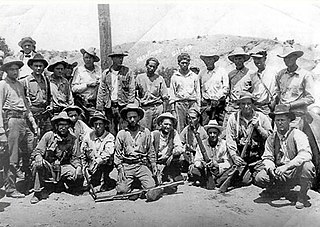
The posse comitatus, frequently shortened to posse, is in common law a group of people mobilized by the conservator of peace – typically a reeve, sheriff, chief, or another special/regional designee like an officer of the peace potentially accompanied by or with the direction of a justice or ajudged parajudicial process given the imminence of actual damage – to suppress lawlessness, defend the people, or otherwise protect the place, property, and public welfare. The posse comitatus as an English jurisprudentially defined doctrine dates back to ninth-century England and the campaigns of Alfred the Great simultaneous thereafter with the officiation of sheriff nomination to keep the regnant peace. There must be a lawful reason for a posse, which can never be used for lawlessness.
Joseph Lumpkin Merrell was an American sheriff. He was sheriff of Carroll County, Georgia at the turn of the 20th century who gained nationwide fame for stopping a lynching. Articles about his bravery appeared in the New York Evening Post, the Atlanta Constitution, the Louisville Courier Journal, the Washington Star, and the Boston Herald. He is also mentioned by Mark Twain in his 1901 essay The United States of Lyncherdom. Merrell's last name was often misspelled in the press as "Merrill."
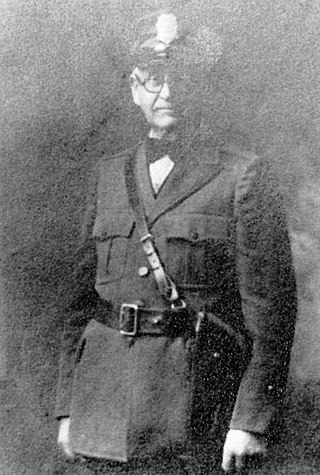
Thomas Beloat was an American sheriff of Gibson County, Indiana at the turn of the 20th century noted for stopping a lynching in the county seat of Princeton. He was the subject of a June 10, 1901 article in the New York Tribune. Beloat was one of two law enforcement officials whose bravery in preventing lynchings in early 20th-century America was noted by Mark Twain in his 1901 essay The United States of Lyncherdom.
The Twain–Ament indemnities controversy was a major cause célèbre in the United States of America in 1901 as a consequence of the published reactions of American humorist Mark Twain to reports of Rev. William Scott Ament and other missionaries collecting indemnities from Chinese people in the aftermath of the Boxer Uprising.
White caps were groups involved in the whitecapping movement who were operating in southern Indiana in the late 19th century. They engaged in vigilante justice and lynchings, with modern viewpoints describing their actions as domestic terrorism. They became common in the state following the American Civil War and lasted until the turn of the 20th century. White caps were especially active in Crawford and neighboring counties in the late 1880s. Several members of the Reno Gang were lynched in 1868, causing an international incident. Some of the members had been extradited to the United States from Canada and were supposed to be under federal protection. Lynchings continued against other criminals, but when two possibly innocent men were killed in Corydon in 1889, Indiana responded by cracking down on the white cap vigilante groups, beginning in the administration of Isaac P. Gray.

Samuel Langhorne Clemens , well known by his pen name Mark Twain, was an American author and humorist. Twain is noted for his novels Adventures of Huckleberry Finn (1884), which has been called the "Great American Novel," and The Adventures of Tom Sawyer (1876). He also wrote poetry, short stories, essays, and non-fiction. His big break was "The Celebrated Jumping Frog of Calaveras County" (1867).
Pierce City Fire Station, Courthouse and Jail is a historic multipurpose fire station, courthouse, and jail building located at Pierce City, Lawrence County, Missouri. It was built in 1886, and is a two-story, Italianate style brick building. It measures 25 feet by 75 feet. It features a distinctive square, hipped roof bell tower and tall vertically oriented windows topped by rectangular topped hoods. The building was the focal point of a race riot August 18–20, 1901, which received national attention and, in part, inspired Mark Twains essay "The United States of Lyncherdom".

Robert Lewis was a 28-year-old African American man who was lynched in Port Jervis, New York on June 2, 1892. His lynching was attended by what the local newspaper reported was a mob of 2,000 people, and may have inspired Stephen Crane's novella The Monster.















